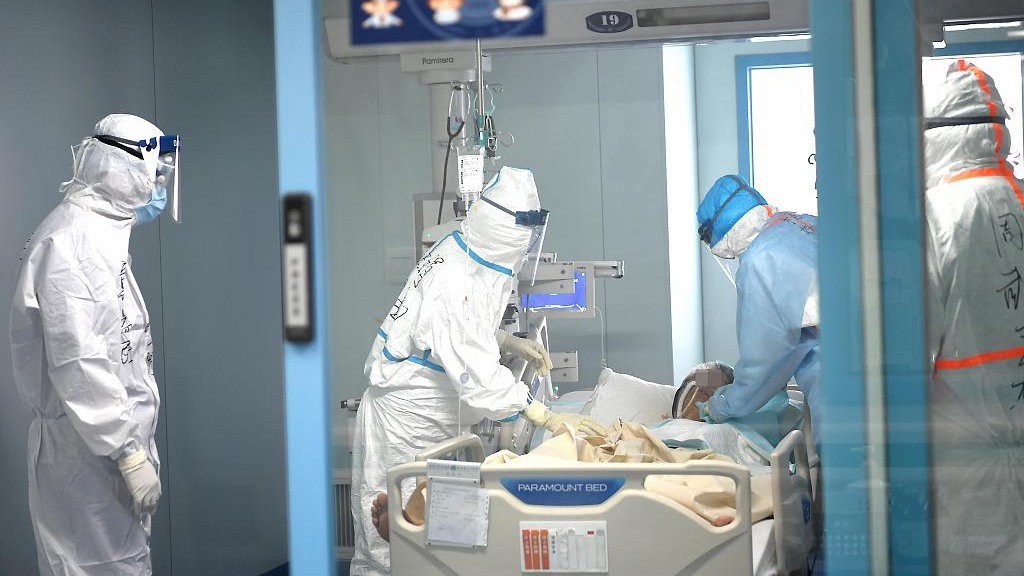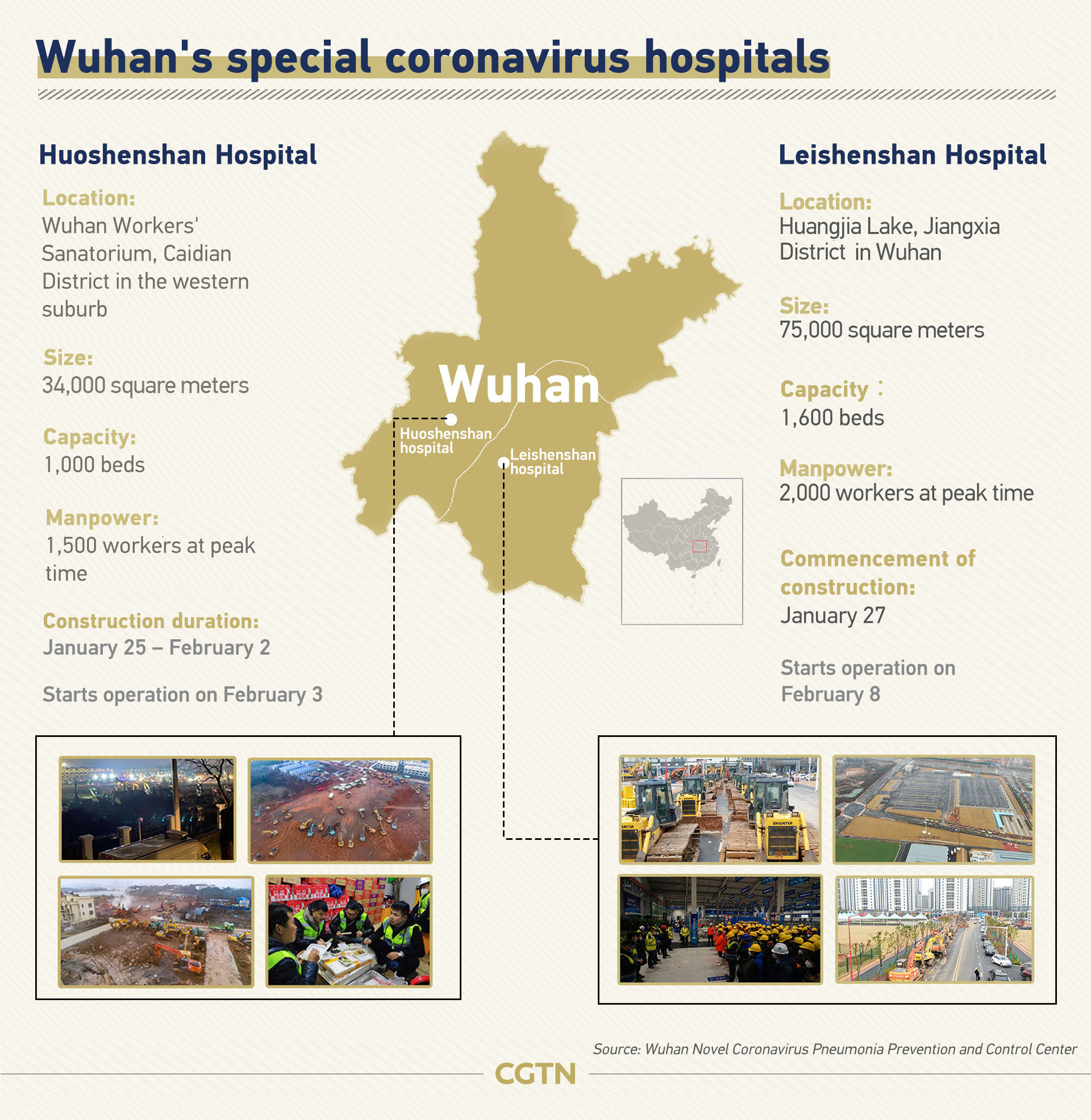
Frontline doctors save lives in hospital. /CFP
Frontline doctors save lives in hospital. /CFP
From early outbreak to an all-out nationwide effort to save as many lives as possible, the Chinese Government has taken the most comprehensive, the strictest and the most thorough prevention and control measures to combat the coronavirus outbreak, according to the white paper released by the State Council Information Office on Sunday.
The white paper, titled "Fighting COVID-19: China in Action," lists major actions and important lessons collected from the pandemic over the past several months.
Early at the outbreak
During the early stages of the outbreak, there were not enough hospital beds for the surging number of critical COVID-19 patients. So, making more beds available was the focus.
China achieved the miracle of building two large hospitals in just days and created more than 1,000 beds with medical capabilities in Wuhan, the then epicenter of the outbreak. And existing hospitals were enlarged to provide more beds.
The number of hospital beds in Wuhan increased from 1,000 to 9,100 to drastically reduce the waiting time by critically ill patients for treatment.

Interference for mild cases
Early treatment can limit the development of COVID-19. About 80 percent of patients only showed mild symptoms and didn't need ICU beds to recover early in the outbreak.
For these people, Wuhan turned 16 stadiums and exhibition halls into temporary medical centers, adding 13,000 more beds to put mild cases into quarantine. This greatly limited the long-term spread of the novel coronavirus.
Advanced technology, such as remote video diagnosis, was another special feature of China's plan for mild cases. With 5G and optic fiber, hospitals across China were linked together to form a nationwide network against the epidemic.
Up-to-date treatment plans
As an early battleground of the COVID-19 epidemic, China has issued seven evidence-based guidelines on coronavirus diagnosis and treatment, which have proven to be effective in global epidemic prevention and control.
Soon after the outbreak, Chinese experts have updated seven versions of the guidelines in less than two months to provide clinical staff with the latest effective methods in identifying, diagnosing and treating the disease, which had never been experienced in China before but with wide and quick infection rate.
Each version was updated with a better knowledge of the clinical manifestations and pathology of COVID-19, and has provided clinical medical personnel with efficient guidance.
TCM, a promising option
Experts in China have opted for a combination of Traditional Chinese Medicine (TCM) and western medicines for COVID-19 patients, as both have strengths.
Data shows TCM has been used on more than 90 percent of China's COVID-19 patients. In Wuhan, the hardest-hit city, nearly all patients in temporary hospitals have been treated with TCM to increase recovery rates and lower mortality rates.
As the spread in other countries continues, Chinese doctors, who served on the front line in fighting against COVID-19 in Wuhan, share TCM information and experience with their international peers from around the world via video conferences.
Helping COVID-19 patients foot medical bills
China has updated its health insurance policy by adjusting that of confirmed and suspected COVID-19 patients who were provided with treatment first irrespective of cost issues.
For these medical costs, public finance provides subsidies for the deductible borne by individuals, while the rest is covered by basic medical insurance, critical illness insurance programs and medical assistance per their respective rules.
Strengthening infection control
China has formulated guidance documents over infectious disease control and enhanced training for medical staff.
It has also provided targeted guidance to key hospitals with a high risk of infection; those that were under great pressure in areas badly hit by the coronavirus outbreak.
China has improved its classification, delivery and storage of medical waste to prevent coronavirus from spreading due to unregulated operations.